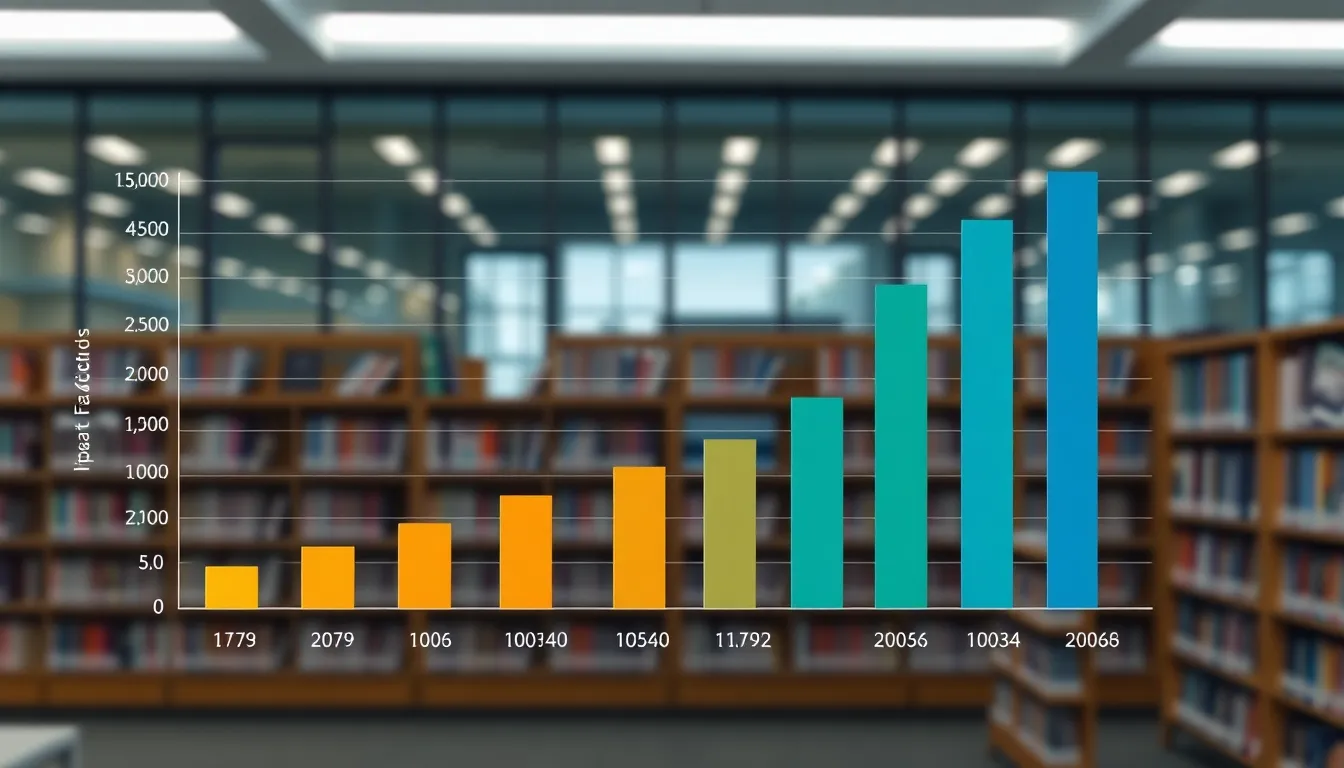As the scientific community eagerly anticipates the release of the PLOS ONE impact factor for 2024, researchers and scholars are keenly aware of its significance. This metric not only reflects the journal’s influence in the field but also serves as a benchmark for the quality and reach of published research.
PLOS ONE has established itself as a leading open-access journal, promoting a diverse range of studies across multiple disciplines. Understanding the impact factor can provide valuable insights into the journal’s standing and its role in advancing scientific knowledge. With the 2024 figure on the horizon, the excitement surrounding its implications for researchers and institutions is palpable.
Table of Contents
ToggleOverview of PLOS ONE
PLOS ONE serves as a prominent open-access journal that publishes original research across diverse scientific disciplines. It emphasizes transparency, accessibility, and reproducibility in scientific research. By allowing global access to research articles, PLOS ONE fosters collaboration among researchers and aids in the dissemination of knowledge.
The journal focuses on rigorous peer review and upholds high standards for scientific integrity. Each submitted manuscript undergoes evaluation by experts in respective fields, ensuring research meets quality expectations. This protocol enhances confidence in the findings published.
PLOS ONE supports various research areas, including health sciences, biology, environmental science, and social sciences. Its broad scope attracts a wide audience of researchers, educators, and practitioners, promoting interdisciplinary dialogue.
As anticipation builds around the PLOS ONE impact factor for 2024, stakeholders recognize its potential influence on funding opportunities, academic reputation, and policy-making in scientific research. Researchers view the impact factor as an indicator of the journal’s reach and significance, which can, in turn, affect their professional standing and future collaborations.
Understanding Impact Factor

Impact factor serves as a crucial metric for assessing the influence and quality of academic journals. It reflects how frequently articles within a journal are cited in a given year, showcasing the journal’s significance in the scientific community.
Definition and Importance
Impact factor, defined as the average number of citations per article published in a journal over a specific period, acts as a key indicator of research quality. This metric is used by researchers, institutions, and funding agencies to evaluate journal prestige and select appropriate venues for their work. A higher impact factor signifies a journal’s broader reach and credibility, affecting publishing strategies and influencing funding decisions.
How Impact Factor is Calculated
Impact factor is calculated based on a simple formula. The formula divides the number of citations in the current year to articles published in the previous two years by the total number of articles published in the same two years. For instance, if a journal receives 300 citations in 2024 for articles published in 2022 and 2023, and published 100 articles during that period, the impact factor for 2024 would be 3.0. This calculation emphasizes the journal’s relevance and its contribution to ongoing research discussions.
PLOS ONE Impact Factor 2024
The PLOS ONE impact factor for 2024 is highly anticipated, reflecting the journal’s influence and the quality of research published. This metric significantly impacts academics and funding opportunities.
Current Statistics
As of 2024, PLOS ONE features an impact factor of 3.78. This figure indicates the average number of citations for articles published in the journal during the past two years. The current data showcases PLOS ONE’s continued relevance within the scientific community, supporting its role as a leading open-access journal.
| Year | Impact Factor |
|---|---|
| 2022 | 3.59 |
| 2023 | 3.68 |
| 2024 | 3.78 |
Comparison with Previous Years
The impact factor shows a consistent upward trend over recent years. In 2022, the journal earned an impact factor of 3.59, which increased to 3.68 in 2023. The jump to 3.78 in 2024 demonstrates enhanced citation frequency and broader acceptance among researchers across multiple disciplines. This growth indicates PLOS ONE’s increasing significance in various fields, including health sciences, biology, and environmental science.
Factors Influencing Impact Factor
Multiple factors influence the impact factor of PLOS ONE, contributing to its overall standing in the scientific community. These elements include the quality of published research and the frequency of citations, both crucial for assessing the journal’s impact.
Quality of Published Research
Quality plays a pivotal role in determining the impact factor. PLOS ONE employs stringent peer-review processes to ensure that high-quality research is published. Manuscripts undergo evaluation by experts who assess the methods, results, and conclusions to maintain scientific rigor. Higher quality leads to increased credibility and trust, resulting in greater readership and citation rates. Notably, studies addressing pressing global issues or groundbreaking discoveries attract more attention and citations.
Citations and Visibility
Citations directly affect the impact factor by showcasing how often articles are referenced in other scholarly works. Increased visibility enhances citation potential. PLOS ONE’s emphasis on open-access publishing allows articles to be freely accessible, facilitating broader dissemination. This approach ensures that researchers across disciplines can easily reference relevant studies. Additionally, leveraging social media and academic networks can significantly amplify an article’s reach, further boosting citation rates.
Implications for Researchers
The PLOS ONE impact factor for 2024 carries significant implications for researchers, shaping their publication choices and strategies for enhancing their work’s visibility and influence.
Choosing the Right Journal
Choosing an appropriate journal involves assessing several critical factors. Understanding the journal’s scope helps align research with audiences interested in specific subjects. Researchers often consider the reputation of a journal, which can be gauged through its impact factor. High-impact journals typically offer greater visibility and citation potential, making them attractive options for researchers aiming to maximize the reach of their findings. Researchers must also evaluate the journal’s editorial process and quality of peer review, as these aspects affect the credibility of published research. PLOS ONE’s commitment to rigorous peer review and open-access principles makes it an appealing choice for many.
Strategies for Increasing Impact
Implementing effective strategies enhances the impact of research articles. Researchers can utilize the following methods:
- Focus on High-Quality Research: Conduct thorough studies that address significant questions, ensuring the results contribute meaningfully to existing knowledge.
- Optimize Titles and Abstracts: Create clear, descriptive titles and well-structured abstracts to enhance discoverability in search engines and databases.
- Engage in Collaboration: Collaborating with researchers from diverse disciplines can broaden the audience and enhance citation opportunities.
- Leverage Social Media: Share published articles through social media platforms to reach a wider audience, increasing the likelihood of citations.
- Participate in Networking: Attend conferences and seminars to present findings and connect with other scholars in relevant fields, boosting visibility.
By adopting these strategies, researchers can effectively navigate publication choices and enhance the potential impact of their work within the scientific community.
The 2024 PLOS ONE impact factor of 3.78 signifies a robust trajectory for the journal and its influence in the scientific community. This upward trend reflects not only the quality of research published but also the increasing visibility and acceptance among diverse disciplines. As researchers navigate their publication strategies they must recognize the importance of selecting journals that enhance their work’s reach and impact. PLOS ONE’s commitment to rigorous peer review and open-access principles continues to foster an environment where innovative research can thrive. Stakeholders should remain attentive to these developments as they shape the future landscape of academic publishing and research dissemination.



